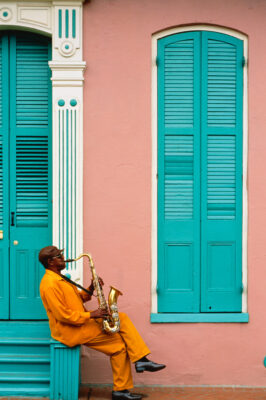
Travel
Riga: Art Nouveau metropolis
The Latvian capital has the highest concentration of the ornamental architecture style anywhere in the world.
On my first trip to Paris, decades ago, I fell madly in love with Hector Guimard’s metro station entrances, swirling up from the ground like giant, sexy, iron grasshoppers. At some point I realized that this sinuous style was Art Nouveau, and that whole buildings—whole neighborhoods!—were out there. Not just in Paris, but in Nancy, Brussels, Barcelona, Budapest, Turin, Vienna, and beyond.
But the motherlode of Art Nouveau architecture is the Latvian capital of Riga, a UNESCO World Heritage site—and the city with more of the style than anywhere else in the world. Fully a third of the buildings in the center are Art Nouveau, most of them grand apartment houses—a concentration akin to what New York would look like if there were at least one Dakota or Belnord on every block.
Art Nouveau flourished in Europe from the late 19th century until World War I, after which its curves gave way to streamlined Art Deco. Its heyday happened to coincide with Riga’s most prosperous years, a time of booming population and the need for new apartments. Most of the existing buildings in the center of the city were made of wood, and an astonishing number survive, often timbered cheek by stony jowl with the Art Nouveau. The city is actually an architectural geek triple crown: within walking distance of the center there is also a Hansel and Gretelish medieval Old Town.



Riga is only about 150 miles from the Russian border. Latvia was part of the Russian Empire during the Art Nouveau era, was briefly an independent nation after World War I, and then from 1940 to 1991, was occupied first by the Soviet Union, then by Nazi Germany, and then again by the USSR.
In 1949, over 42,000 Latvians, most of them families with children, were deported to harsh Siberian labor camps. The Museum of the Occupation of Latvia tells its tale in sobering detail; even more creepily evocative is the KGB Museum, housed—as it happens—in a gorgeous Art Nouveau building. Here you can visit the rooms where those who ran afoul of the secret police were interrogated, imprisoned, and executed. A happier landmark is the National Opera and Ballet, which once incubated the talents of the young Mikhail Baryshnikov. The Ukraine flag is ubiquitous.
I didn’t hear an American voice in six days. Most visitors to Riga are from other Baltic countries and elsewhere in northern Europe, but the lingua franca among all those Finns and Lithuanians is English; it’s widely understood and on every sign and menu. Riga is easy. If you don’t want sauerkraut soup, balsam liqueur and Baltic herrings, you’re never far from international staples like burritos and pizza. Air Latvia flies there from most European destinations. Currency is the euro, everything—hotels, flights, cabs—is a bargain, and the country’s internet is among the fastest in the world. But it’s the architecture that makes the city unique, and one wonders what luck has preserved it from war, fire and Soviet bulldozers.



It’s hard to choose a favorite building, but the Cat House—one of the few examples of Art Nouveau in the Old Town—comes with a backstory. It was built in 1909, with two statues on the roof of hissing cats, backs arched and tails held high. Originally the cats’ thrusting butts were pointed toward City Hall—or toward the Guild of Merchants headquarters, according to another version of the legend—with whom the original owner was feuding. Eventually he was forced to move the statues, and today their hindquarters are oriented in more neutral directions.



An Art Nouveau Museum in the newer town center has everything from digital maps showing which architects worked where in Riga to an entire interior apartment decorated in pure Nouveau. (When the museum opened in 2009, it appealed to residents to donate Art Nouveau family tchotchkes, and thousands did.)
The Albert Street block where the museum is located is itself a knockout of harmonious architecture. Check out #2A, with its sphinxes outside the front door. Or the winged dragons at #4 . . . or the turrets with the tragic Greek theater mask sculptures at #13.
Then when you’ve finally exhausted wandering the streets, craning upward, swooning and taking photos of buildings, chillax in one of the city’s many saunas. Your hotel probably has its own.
Hero photo by Maremagnum/Getty Images



